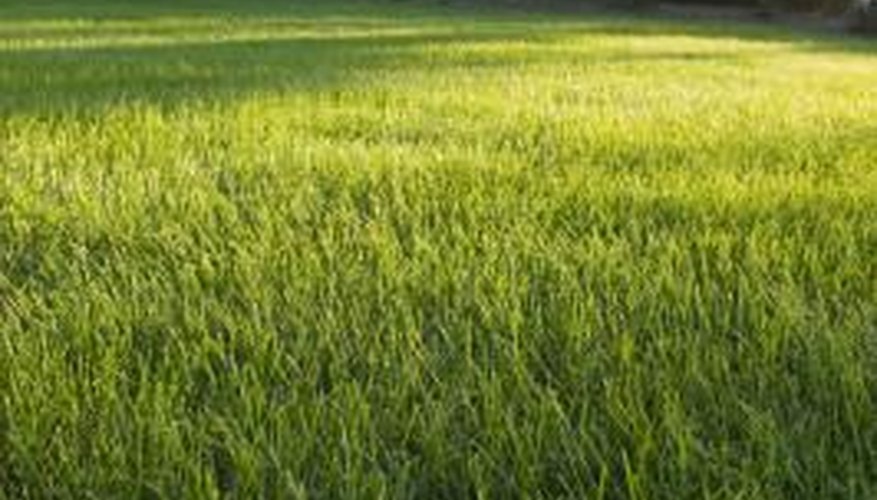Lawn moths are brownish or whitish with a snoutlike appendage on their heads. They cling to blades of grass in a lawn and wrap their wings closely around their bodies. If disturbed, they fly short distances and keep close to the grass. Lawn moths can infest any type of turf. The danger to lawns from lawn moths does not come from the adult moths themselves. The lawn is eaten by the lawn moth larvae, which are known as sod webworms. The key to detecting lawn moth infestations is detection of sod webworms, which can infest almost all types of lawn.
- Lawn moths are brownish or whitish with a snoutlike appendage on their heads.
- The key to detecting lawn moth infestations is detection of sod webworms, which can infest almost all types of lawn.
Inspect your lawn for small bare or brown patches with irregular shapes, 1 to 3 inches in diameter. Individual blades are ragged from chewing or eaten away altogether. Sod webworms do not eat roots. In some lawns, brown patches will be close enough together to form larger ones. Areas of the lawn in direct sunlight and drier areas will have the most damage. Shaded areas will show no damage. Damaged patches can appear in spring but are most prevalent in July and August when the grass is weakened from summer heat and lack of water.
- Inspect your lawn for small bare or brown patches with irregular shapes, 1 to 3 inches in diameter.
- In some lawns, brown patches will be close enough together to form larger ones.
Insert both index fingers at the edge of a brown patch, separating the brown from the green blades in your turf. If you see small, green pellets, they are an indication of lawn moth larvae. The pellets are waste material called frass. If you see frass, your lawn is infested and needs to be treated.
- Insert both index fingers at the edge of a brown patch, separating the brown from the green blades in your turf.
- If you see small, green pellets, they are an indication of lawn moth larvae.
Mix 2 tsp of regular dishwashing detergent in 2 gallons of water. This is called a soap drench. Sprinkle the drench evenly over a square yard of brown turf with a watering can. If lawn moth larvae are present, they will come to the surface. The larvae, or sod webworms, are about 3/4 inch long and off-white. They have two rows of brown or black spots on their backs with bristles growing out of the spots. If you see 10 or 15 of the webworms within the sprinkled area, treat the lawn.
TIP
Treat your lawn for the sod webworms, not the adult moths. If your lawn receives enough fertiliser and water, it may outgrow larvae damage without your having to treat for them. Do not mow the lawn extremely short. Some treatments for sod webworms include nematodes and pesticides.
